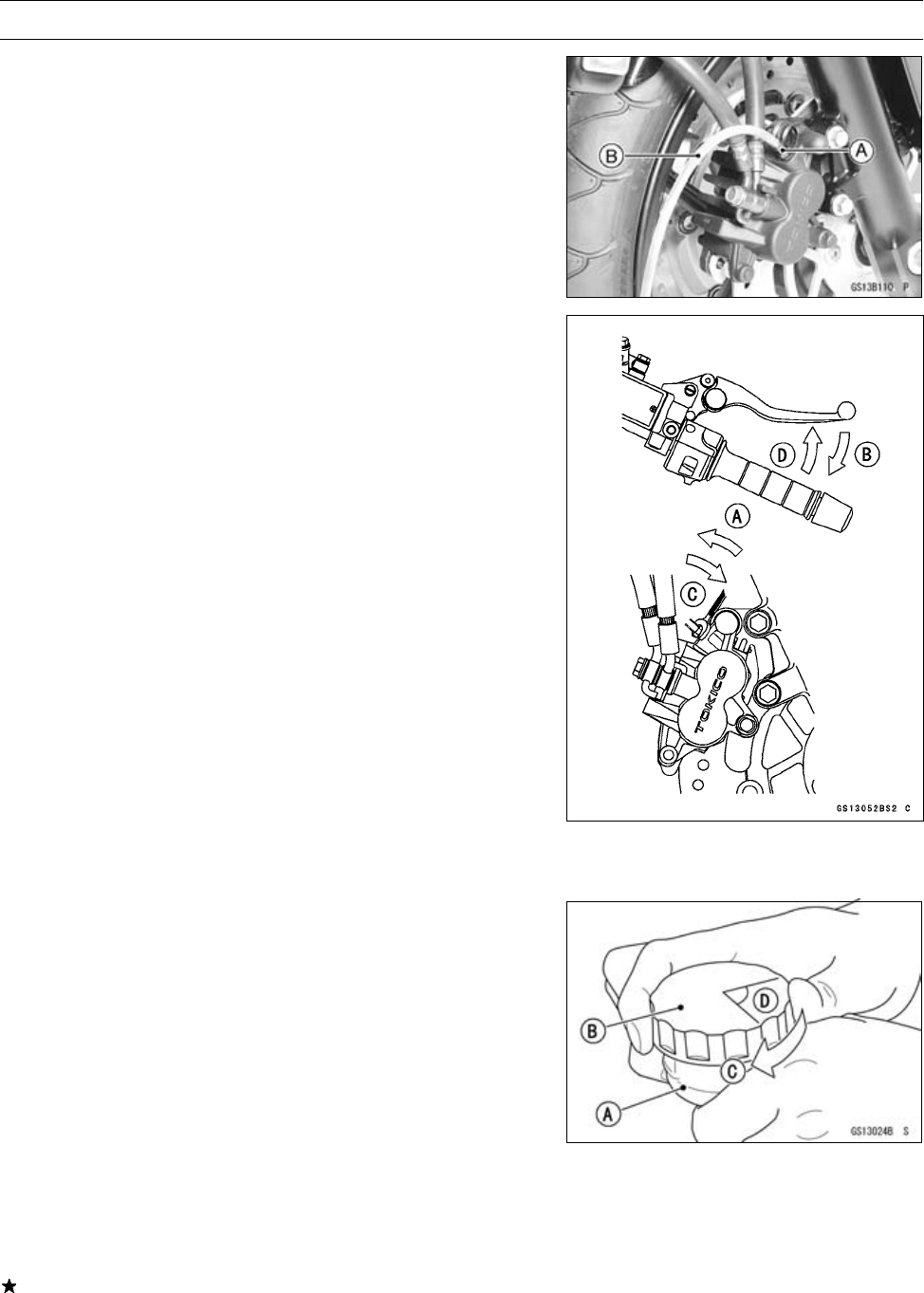
PERIODIC MAINTENANCE 2-33
Periodic M aintenance Procedures
•
Level the brake fluid reservoir.
•
Remove the reservoir cap and diaphragm.
•
Remove the rubber cap from the bleed valve [A] on the
caliper.
•
Attach a clear plastic hose [B] to the bleed valve, and run
the other end of the hose into a container.
•
Fill the reservoir with fresh specified brake fluid.
•
Change the brake fluid:
○
Repeat this operation until fresh brake fluid comes out
from the plastic hose or the color of the fluid changes.
1. Open the bleed valve [A].
2. Apply the brake and hold it [B].
3. Close the bleed valve [C].
4. Release the brake [D].
NOTE
○
The fluid level must be checked often during the chang-
ing operation and replenished with fresh brake fluid. If
the fluid in the reservoir runs out any time during the
changing operation, the brakes will need to be bled
since air will have entered the brake line.
○
Front Brake: Repeat the above steps for the other
caliper.
○
Rear Brake: Repeat the above steps for the other bleed
valve.
•
Remove the clear plastic hose.
•
Install the reservoir c ap.
•
Tighten:
Torque - Front Brake Reservoir Cap Screws: 1.0 N·m (0.10
kgf·m, 9 in·lb)
•
Follow procedure below to rear brake fluid reservoir cap
correctly.
○
First, tighten the rear brake fluid reservoir cap [B] clock-
wise [C] by hand until slight resistance is felt indicating
that the cap is seated on the reservoir body, then tighten
the cap an additional 1/6 turn [D] while holding the brake
fluid reservoir body [A].
•
Tighten the bleed valve, and install the rubber cap.
Torque - Bleed Valve: 7.8 N·m (0.80 kgf·m, 69 in·lb)
•
After changing the fluid, check the brake for good braking
power, no brake drag, and no fluid leakage.
If necessary, bleed the air from the lines.


















